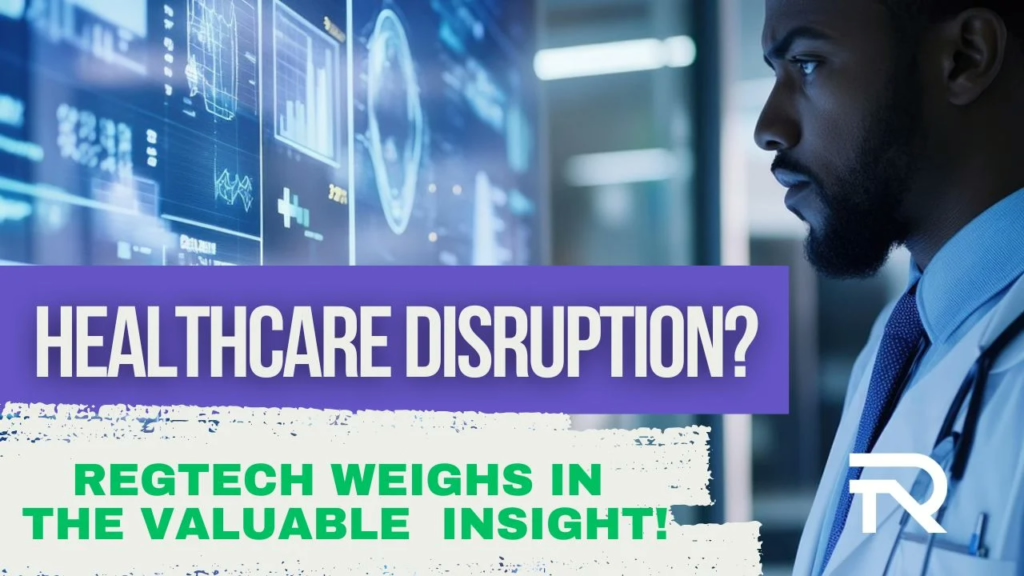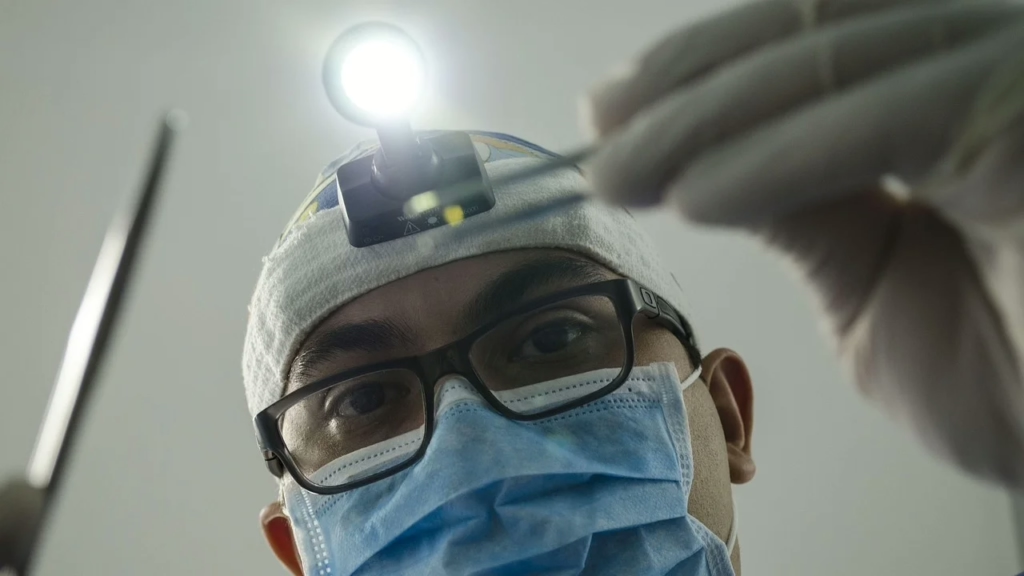We must be honest! No one misses the scratch of pens on paper forms or the musical purgatory of waiting on hold with a doctor’s receptionist. For many across the globe, those bygone annoyances are quietly vanishing, replaced by something less frustrating and far more consequential: Digital e-Health Platforms. These systems aren’t science fiction anymore. They’re the new normal, quietly rerouting the flow of healthcare from clipboard-toting administrators to algorithms and apps.
At first glance, this shift seems like a victory for convenience. But dig deeper and you’ll find a more profound story unfolding, one where smart technology and smarter policy are doing something extraordinary, and that’s redistributing access to health itself. And in Dubai, one firm The RegTech, is placing a calculated bet on this transformation, bringing regulatory clarity to an industry finally catching up with the century it lives in.
5 Key Takeaways
1. Healthcare is finally catching up with reality: Clipboards and call queues are fading. Digital e-health platforms are now quietly transforming how care is delivered—making it faster, smarter, and less frustrating for everyone, from urban centers to refugee camps.
2. Connectivity is a lifeline: From remote heart monitoring in Oman to mobile prenatal care in Malawi, digital tools are reforming who can access care and how. It’s not just about convenience. It’s about reach, equity, and real-time response.
3. Coordination is the quiet revolution: Forget the buzzwords. What’s actually happening is that care is becoming coordinated. Doctors collaborate, errors are caught earlier, and patients gain something deeper than convenience: agency over their health.
4. Inclusion is the difference between systems that work and ones that don’t: Technology that excludes is just a new form of neglect. Platforms must work offline, support multiple languages, and respect cultural realities. RegTech knows digital health is only as good as its ability to serve everyone.
5. Trust is earned with policy: Data is powerful, but without transparency and consent, it can do more harm than good. The RegTech is advocating that digital health systems are built on trust from the ground up, because no platform can scale if people don’t feel safe using it.

Digital e-Health Platforms: No More Clipboards, No More Borders
Digital e-health platforms are the invisible infrastructure of a new healthcare experience, one that stretches far beyond city hospitals and deep into rural communities, refugee camps, and high-rise apartments alike. Think for a moment about a farmer in Oman getting a heart monitor update beamed directly to his potential specialist in Dubai, or a clinic in Uganda tracking antiretroviral adherence with a tap on a tablet. Not someday. Now.
These platforms tie together a medley of tools, Electronic Health Records (EHRs), telemedicine portals, remote monitoring gadgets, mobile apps, and data-crunching AI, to produce care that’s more connected, less chaotic, and often just a few swipes away. They’re not replacing hospitals; they’re reordering how those institutions function and who they can reach.
As a physician in Mumbai cross-references a global rare disease database while diagnosing a toddler with a puzzling rash, and a midwife in Malawi texts prenatal tips to her patient’s phone, it becomes obvious that medicine is no longer confined to brick-and-mortar clinics. It’s digital, it’s distributed, and it’s altering what it means to “go to the doctor.”
Convenience Meets Coordination
Digital platforms aren’t just about ditching paper. They’re about coordination that wasn’t possible before. With EHRs accessible to any authorized doctor, care becomes a team sport instead of a solo scramble. Computerized physician order entry makes no need to decipher scribbles, while with clinical decision support systems, a red flag can pop up before a wrong dose is administered. And that’s before we even mention telemedicine’s impact on rural and elderly populations who simply can’t travel.
These tools also empower patients, who now log into portals for lab results, appointments, even mental health therapy. But let’s not call that “empowerment”, let’s call it what it is: agency. And for communities who’ve long been underserved, that shift is monumental.
Take maternal health in sub-Saharan Africa. Mobile apps are now helping pregnant women in remote regions track appointments and receive vital health alerts. Or in the U.S., where diabetics are using wearable glucose monitors to catch issues early, sharing data live with care teams. These are true lifelines.
Digital e-Health Platforms: The Inequality Dilemma
Yet amid the applause, there’s a warning note. A platform only works if it works for everyone. That means not just designing for the tech-savvy, but for grandma who still uses a flip phone, for communities with spotty internet, and for cultures with deep-rooted medical skepticism.
RegTech knows this well. “Digital doesn’t mean universal,” we always remind the clients. The firm actively pushes for inclusivity, recommending dual-language interfaces, offline functionality, and partnerships with local clinics. Because digital health that excludes is no better than analog health that ignores.
Your Data, Your Diagnosis
As digital tools multiply, so does the data. And when you aggregate enough of it, patterns emerge, patterns that can predict outbreaks, improve treatment plans, and expose healthcare gaps long overlooked. But big data has big baggage. Privacy laws, cultural sensitivity, consent protocols, these aren’t technicalities. They’re the very structures that allow platforms to scale without losing their soul.
At RegTech, a phrase pops up often: consent-first design. It’s about putting patients in control of their data, upfront and in plain language. A health system that surveils isn’t one that serves. And when trust is broken, no amount of AI can patch it.
Dubai’s Quiet Healthcare Powerhouse
From the outside, The RegTech might look like just another regulatory consultancy. But from the inside, something unusual is happening, policy is being sculpted not just to react to digital health innovation, but to anticipate it. And that foresight matters. We spend a lot of time thinking about what digital health looks like beyond city hospitals and fiber-optic coverage maps. In many ways, the most exciting work in digital healthcare isn’t happening in glass towers or capital cities, it’s unfolding in places where basic access to a doctor has historically been the exception, not the norm.
This is especially true in Africa, where over 600 million people live in rural and hard-to-reach areas with limited access to consistent, high-quality care. Traditional healthcare infrastructure like buildings, beds, personnel, is expensive, slow to build, and hard to scale. But digital healthcare? It’s mobile. It’s modular. And when implemented correctly, it can be transformative.
Confronting Red Tape at the Policy Level
Our role is to make sure these innovative models don’t get tangled in red tape or stall out at the policy level. As we already mentioned, every digital interaction in healthcare, whether it’s a prenatal consultation via video call, remote diagnostic data sent from a mobile clinic, or a regional telemedicine program, depends on trust. And trust isn’t a feature you can download. It must be designed, embedded, and enforced.
In many African countries, where national telemedicine strategies are still taking shape, we offer support from the ground up. That includes advisory on aligning local regulations with global best practices, integrating legacy health systems with new digital platforms, and guaranteeing platforms are not only scalable, but also equitable. And we’re not idealists. We know that broadband deserts exist. We know some users have never touched a smartphone. That’s why we push for “offline-capable compliance” systems that work without constant connectivity, and protocols that can be implemented by mid-level health workers, not just specialists.
Digital e-Health Platforms: Scaling, Not Spiraling
What’s next? Beneath the AI, blockchain and predictive analytics hype lies a real challenge: keeping the human in healthcare. Yes, algorithms can now spot anomalies in scans with eerie precision. But they can’t hold your hand or sense when you’re lying about that fourth cigarette.
There’s a danger in chasing every new shiny tech without checking if it fits into actual clinical workflows or meets community needs. Scaling these platforms isn’t about throwing more money at them. It’s about partnerships. Between governments and startups, clinicians and coders, regulators and end-users
So yes, your next doctor might be an app. But that’s not the headline. The real story is this: quality care is finally crossing borders, and not just political ones, but economic and infrastructural ones, too.
And in that story, digital e-health platforms are not the protagonists. People are. The mother in Ethiopia who gets antenatal care reminders on her phone. The young man in Jordan who books therapy through a secure portal. The elderly woman in Abu Dhabi whose pacemaker pings a warning before she even feels discomfort. These are not futuristic fantasies.
As servers hum and policies evolve, one truth stands: the future of healthcare doesn’t sit in a waiting room. It logs in. And it looks like that’s progress worth betting on.
We are here to help governments, financial institutions, and businesses to effectively comply with growing regulatory requirements through technology.









